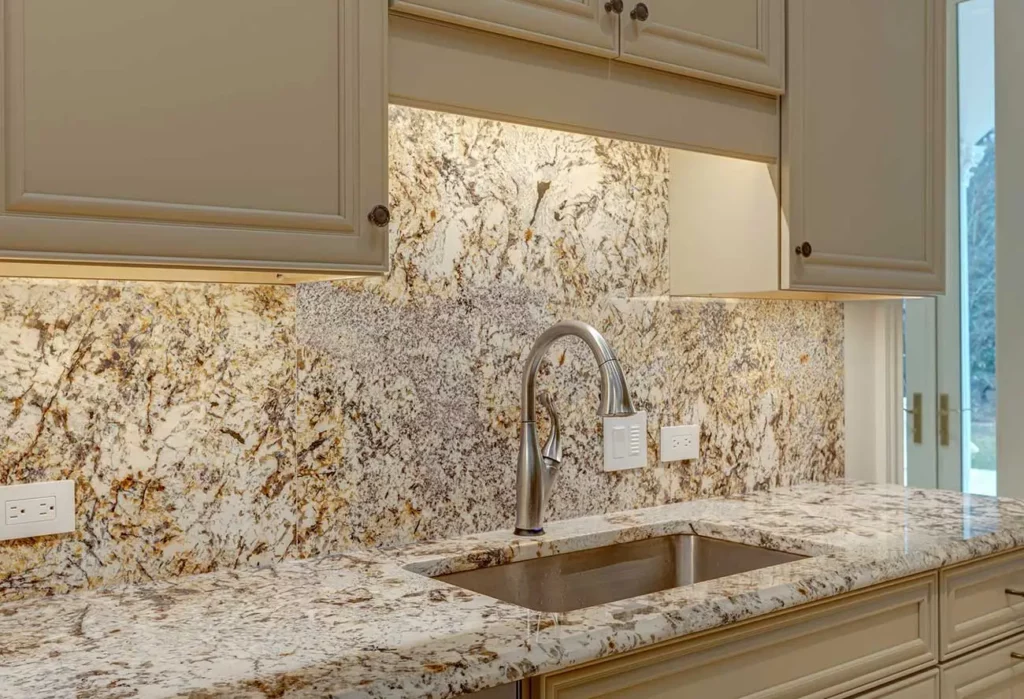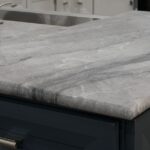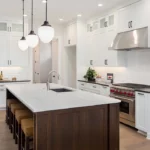The short answer is: it depends on whom you ask. Although still striving on the general construction market, granite countertops have seen a slight shift in popularity over the past decade. Despite being part of our lives since the last century, people have been keen on trying out new products for their desired aesthetic – even undergoing house remodeling here and there. Updating the looks of our counters does not mean that granite is bad, but it still begs the million-dollar question: are granite countertops outdated or not?
Keep reading this brief article to know why opinions diverge. By the way, in case you’re here browsing for the perfect stone, click here to check out all the properties of granite countertops that might come useful in your choice.
So, are granite countertops outdated?
Not really. They are still a common material, but there are competitors just as versatile out there. It all comes down to personal preferences.
The world of interior design is always changing. Trends, cost-benefits, supply and demand – this oscillation is no different here. Granite countertops first entered American houses in the early 1990’s, when using natural stones for kitchens and bathrooms boomed on a global scale. In those days, however, granite countertops – along with marble – was an accessible luxury, which led many people to acquire them with no second thought.
Fast-forward to the 2020’s, granite countertops are now everywhere, right? Chances are that you bought your home with them already in it and didn’t think much of it at first. After some ideas to spice up your old furniture, though, you realized that not only are they not in pair with your new aesthetic plans, but also maybe too old to even consider otherwise.

After some research, then, wondering whether granite countertops are outdated, you came across a crucial factor: should they stay or should they go?
Again, that will depend entirely on your creative goals.
Upsides of granite countertops
There’s a reason why natural stones have their place in both hardscape and design industries. Granite in particular has loads of long-term benefits, which range from outstanding durability to a vast pool of warm colors and finishes to please every taste. When people look to renovate their countertops, the last thing they should consider is getting a new stone to substitute the old one.
You see, with recent innovations in technology, the freedom we have to personalize existing products is amazing, which actually can save you a few bucks and still make your granite countertops look as beautiful as a new one. A recent trend going around concerns leathered finishes, for example, a process that completely revamps the look of the stone without affecting its color.
Downsides of granite countertops
Speaking of technology, however, nowadays there are just more options to choose from. That’s part of the reason why granite’s sales have been stale compared to previous decades. Quartz (more on that in a bit), onyx, laminate countertops – all of these are viable elements to integrate gorgeous surfaces to any house.
Although sharing a great deal of grayish tones and patterns, granite is usually limited to that crispy, moving look we are all used to. People who value cleanliness, brightness and peaceful vibes will always look for lighter colors and polished textures, characteristics that most granite stones lack.
Substitutes for granite countertops
Nevertheless, not every granite countertop is salvable – especially if it has never been taken care of. Not sealing its porous surface yearly will greatly diminish its lifetime, urging for a necessary change before it starts cracking away.

Below we’ve listed some trendy candidates to substitute our old friend:
- Quartz: quartz is an engineered stone that can look either natural or manmade material, going as far as mimicking marble for the enthusiasts. Its non-porous surface does not require sealing, leading to a more carefree routine cleaning. Also, it’s slightly less expensive than granite.
- Wood: the rustic, classic, rough look that never goes out of fashion. Although as expensive as natural stones, wood can literally be found anywhere in the world and comes in many patterns, fitting any style.
- Quartzite: quartzite is a natural stone similar to granite that offers a wider variation of cooler colors. It’s eye-catching and very durable.
Final considerations
According to economists, natural stones such as granite are poised to grow into 2025 for a few reasons.
First, like we mentioned over and over, granite was a big hit that didn’t really need to be changed from one homeowner to another. That is true to this day. Granite is durable, fits pretty much every idea of beauty in our eyes, and on top of that is easy to maintain. Second, it remains as a cheaper, more accessible option over exotic stones available on the market. Other materials like metal and concrete are also good contenders, but many claim they’re even more outdated for interior design than natural stones themselves.
After reading the article, we hope we were able to open your mind a little bit. From an aesthetic perspective, granite countertops can be called outdated, but from an economic standpoint they probably won’t ever be.
Contact Eagle Stones for unlimited supply!
Whether you decided to still go with a granite stone or chose to update the looks with a rare marble, Eagle Stones is here for you. As a local provider and expert team, our services can guide you through every step of the way towards your dream project. Click here to view the online catalog or fill out this form for a free quote!
You might also like: Granite Countertop Installation – Complete Guide.
We’ll be waiting for you in Sarasota, FL!



